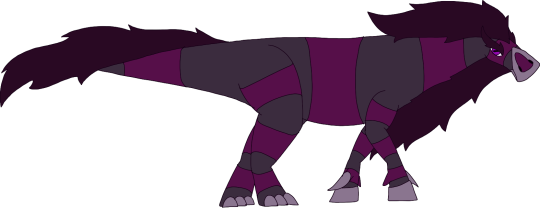#e. annectens
Text
Dinofact #109
Edmontosaurus' taxonomic history is quite complicated, with specimens belonging to E. annectens being classified as many other species, such as Hadrosaurus, Diclonius, and Claosaurus, as well as the dubious genera Trachodon and Thespesius, and, now synonymous with Edmontosaurus, the genera Anatosaurus and Anatotitan.
Source: Wikipedia
#dinosaur#dinosaurs#paleontology#edmontosaurus#edmontosaurus annectens#e. annectens#taxonomy#hadrosaurus#diclonius#claosaurus#trachodon#thespesius#anatosaurus#anatotitan#fun facts#trivia#dinosaur trivia#dinosaur fun facts#24th#december#2022#december 24th#december 2022#december 24th 2022
7 notes
·
View notes
Text
Aumenta a 348 mil hectáreas el ecosistema protegido de Guerrero
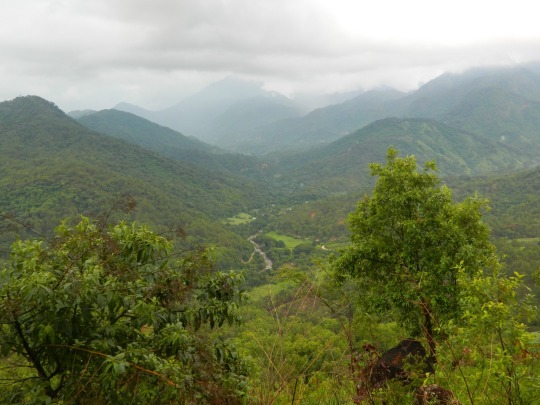
CHILPANCINGO * Enero 9, 2024.
) Gobierno de Guerrero
La gobernadora Evelyn Salgado Pineda celebró el decreto presidencial donde se establece

que Guerrero cuenta con una nueva reserva de biosfera, aumentando de 5 mil a más de 340 mil hectáreas de áreas naturales y ecosistemas protegidas, así como la protección de especies endémicas como el Colibrí Coqueta de Atoyac de Álvarez, el Jaguar y distintas especies de felinos en Guerrero.
Luego de darse a conocer en la conferencia matutina del presidente Andrés Manuel López Obrador, la Secretaría de Medio Ambiente y Recursos Naturales Federal confirmó que el estado de Guerrero contará con 348 mil hectáreas de nuevas áreas protegidas, luego de declararse a la “Sierra Tecuani” en reserva con categoría de reserva de la biosfera, compartiendo territorio con los municipios de San Miguel Totolapan, Ajuchitlán del Progreso, Tecpan de Galeana, Coyuca de Catalán y Atoyac de Álvarez, así como un corredor emblemático del jaguar, el ocelote y distintos felinos.
La administración que encabeza Evelyn Salgado Pineda desde el primer año de su administración mantiene una política ambientalista integral con la premisa de cuidar los

ecosistemas, destinando recursos para estudios de población y distribución de especies endémicas y en peligro de extinción.
En Guerrero, la nueva reserva de biosfera denominada “Sierra Tecuani” alberga y salvaguarda a 1,879 especies nativas de las cuales 499 son endémicas y 150 se enlistan en alguna categoría de riesgo en la "Norma Oficial Mexicana NOM-059”. En este contexto, la entidad cuenta con 5 de las 6 especies de grandes felinos, como el jaguar, el ocelote y el tigrillo, además, entre las especies protegidas en la Sierra Tecuani se encuentran dos invertebrados, la tarántula dorada de México (Brachypelma albiceps) y tarántula mexicana de rodillas rojas (Brachypelma smithi), ambas en categoría de amenazadas.
Además de 12 especies de anfibios como la Rana Sierra Madre (Lithobates sierramadrensis); 29 especies de reptiles como el Cantil (Agkistrodon bilineatus), ambas sujetas a protección especial; 50 especies de aves como el zopilote rey (Sarcoramphus papa), en peligro de extinción; 17 especies de mamíferos como la nutria de río (Lontra longicaudis subsp. annectens), en categoría de amenazada y como uno de los objetos de
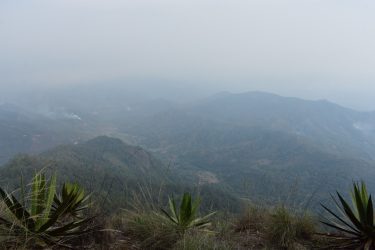
conservación más importantes el depredador de mayor talla en el continente americano, el jaguar (Panthera onca).
Asimismo, en el decreto publicado en el Diario Oficial de la Federación se especifica que también se encuentran especies polinizadoras como los insectos. Destacan por su diversidad e importancia ecológica las mariposas, polillas, hormigas, escarabajos y abejas, así como vertebrados entre los que se encuentran 26 colibríes y 10 murciélagos como el lengüetón de Pallas (Glossophaga mutica).
] Síguenos en facebook.com/acapulcopress
) Síguenos en facebook.com/angelblanco.press
] Síguenos en ) acapulcopress.com
Read the full article
0 notes
Photo

Inktober day 24: Hadrosaurid, Edmontosaurus annectens. I was really digging the legs on this one.
Bite-sized science fact: We have many skin impressions from various dinosaurs—marks and patterns left in mud and other substrates that shows a relief of scales or feathers—but we have genuine fossilized skin from E. annectens. Like, mummy-style this-was-actual-skin skin, plus some muscles and tendons. Colors weren’t preserved during fossilization, but the scale patterning suggests the dinosaur was partially striped.
#paleoart#biology#hadrosaur#dinosaur#paleontology#my art#artists on tumblr#original art#inktober#inktober2019#science fact friday
176 notes
·
View notes
Note
Are Trachodon, Hadrosaurus, Claosaurus, Anatosaurus and Anatotitan all the same as Edmontosaurus?
Well, that depends on who you ask. There are two widely accepted species of Edmontosaurus: The earlier, smaller, shorter-faced, crested E. regalis and the later, larger, longer-faced, so-far-crestless E. annectens.
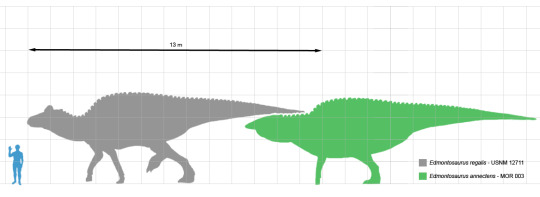
(Image by Matt Martyniuk)
E. regalis is the type species of Edmontosaurus; E. annectens was later assigned to it.
“Anatosaurus” is a genus that was coined specifically for E. annectens when it was widely thought distinct enough to merit its own genus. This isn’t widely accepted nowadays, though it is used by some people (notably, by the creators of the videogame Saurian).
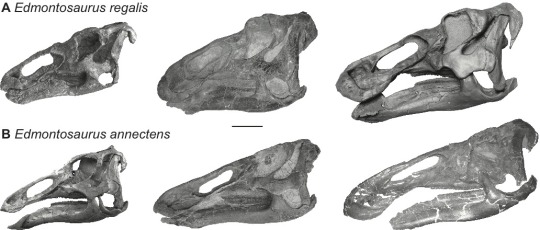
Pictured: Awkward yearbook photos, featuring “Anatotitan” in the lower right.
“Anatotitan” was thought to be a distinct animal from both Edmontosaurus species. However, more recent work has revealed that it likely just represents an older E. annectens, making it a junior synonym.
Here’s where it starts to get a little tricky. Claosaurus agilis was originally named as Hadrosaurus agilis in 1872; it was later given its own genus in 1890. Edmontosaurus annectens was originally then described as Claosaurus annectens in 1892, and then Edmontosaurus regalis was named as a new genus and species in 1917. In 1942 annectens was placed into the new genus “Anatosaurus”, where it stayed until it was moved into Edmontosaurus in 1990.
Are you with me? Good. Let’s talk about dubious taxa.
If a species can be reliably distinguished from other species, and confidently stated to be different, it’s called a diagnostic taxon. So what if it isn’t, and how did these come about?
In the early days of palaeontology, everything was new. If you found something, chances were pretty high it was like nothing ever before seen, so even the scrappiest crappiest bits of bone could have never-before-seen features that meant they could be clearly distinguished from everything else we knew of.
The key word there is “knew” - because we’ve found so much more since then, and this newer stuff is more complete. Features that once were brand new and unique were found to be present in whole swathes of animals, and so taxonomic rot set in. Taxa that were once diagnostic now were just crappy bits of bone that no one could say were unique.
So, that’s okay, right? We can just sink those into newer species. Right?
Unfortunately….not really. There’s a precedent of taxonomic priority - that the oldest name is the one that should be used. This is a good rule to have in most cases, because it prevents some devious egomaniacal upstart from coming in and naming new species to overtake old ones. But since a lot of these crappy fossils were named first….well, we can’t really sink them. Nor can we prove that these newer fossils are the same as the older ones….because the older ones are so crappy. They could be anything. They could be unique. They could be the exact same as something else. We don’t know. They’re dubious taxa.
Okay, that’s a lot of words. We’re here for pictures, damn it, let’s see the dinosaurs.

This is Trachodon. Well, it’s all we have of it.
One thing you’ll notice very quickly is that a lot (a LOT) of these old crappy genera are used as taxonomic garbage cans. Because they’re so scrappy, you could argue that ANYTHING that looks similar to them should be inside that genus, and so new species that are described will be shoved into there - and yes, this included annectens.
What actually was Trachodon? Well, it’s a mixture of ceratopsian and hadrosaur teeth. It’s probably something like Lambeosaurus, more specifically.

This is Thespesius. Try not to marvel at its amazingness.
Thespesius was named the same year as Trachodon (1856), and by the same dude, no less. Uh, there’s not a ton to say about this one. It was used as a dumping ground for other species - including E. annectens. It’s too scrappy to really say anything about.
What actually was it? Realistically? Edmontosaurus annectens, but you can’t prove that, and it was named first.
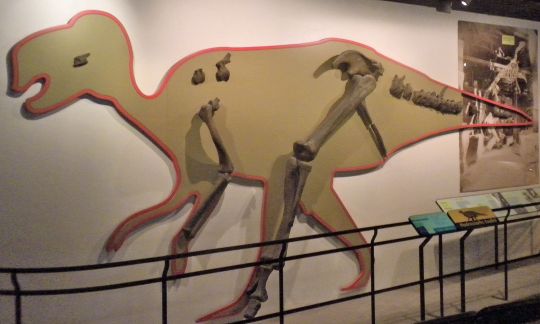
This is Hadrosaurus. Surprisingly un-crappy! Believe it or not, these bones were the first reason we knew that some dinosaurs walked on two legs.
Hadrosaurus was described in 1858, two years after Trachodon. It’s been considered dubious on and off throughout the years; it seems it might actually not be dubious (surprisingly). It’s another wastebasket taxon, and yes, annectens was considered a part of it at one point.
What actually was Hadrosaurus? It was a hadrosaur (shocker!) that was probably more “primitive” than either the hollow-crested lameosaurines or the flat-headed saurolophines.
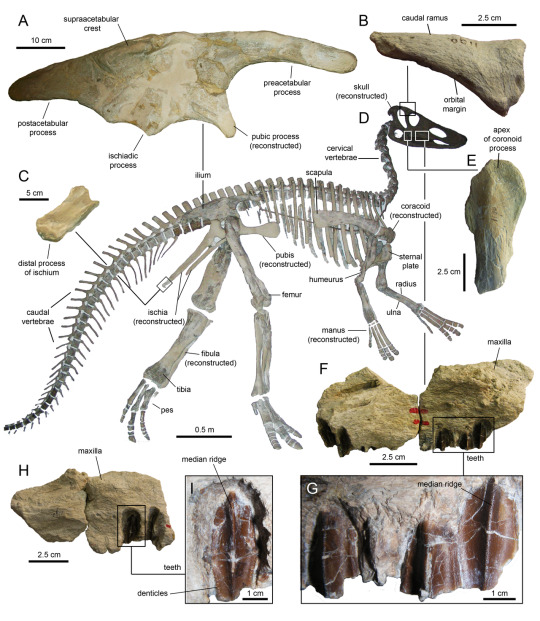
This is Claosaurus. No, not the whole thing, just the photos around the edges. The rest is just a best-guess.
Claosaurus was named as a species of Hadrosaurus in 1872, then given its own genus in 1890. Like Hadrosaurus, it was used as a major wastebasket taxon, and like Hadrosaurus, it’s hanging out in taxonomic limbo where no one is willing to say if it’s dubious or not. The general consensus on this one seems to be “diagnostic enough”.
What actually was it? Probably a non-hadrosauid hadrosauromorph, if you can believe that.
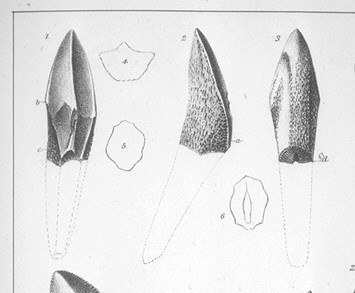
I couldn’t find a picture of Diclonius. This isn’t Diclonius, it’s Trachodon. But it might as well be Diclonius. Imagine that picture but very slightly different.
Diclonius was named in 1876. Surprise! It’s a wastebasket taxon. Surprise! It’s dubious.
What was it really? ¯\_(ツ)_/¯ Eh, it was a hadrosaurid of some kind. Probably a lambeosaur.
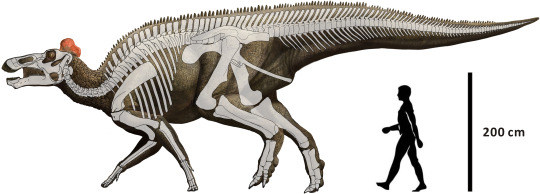
And there you have it! I’m sure your life was amazingly enriched by the knowledge of these obscure dubious taxa. Tell your friends all about them. Write to your representative. Buy this t-shirt and I get 0% of the profits. Make a cake with Thespesius on it. Hunt down Diclonius and send me a picture.
273 notes
·
View notes
Text
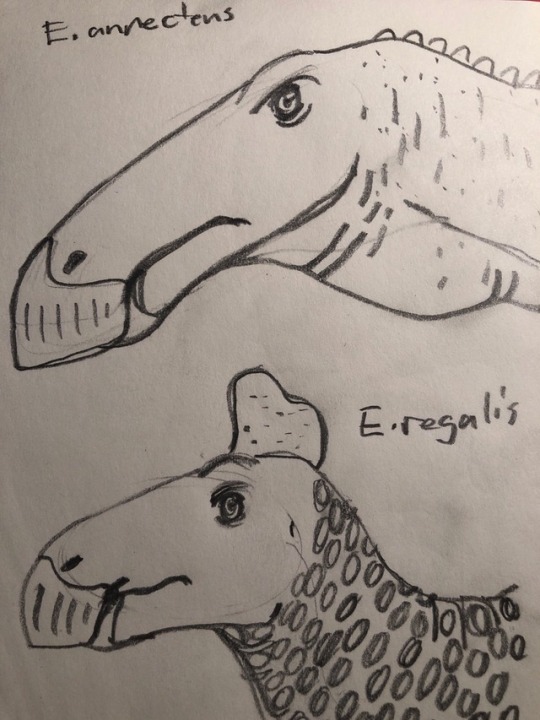
Day 9: Edmontosaurus.
Two species between these two (top; E. annectens and bottom; E. regalis).
I’m been so distracted after I finished my sketch. So hope of you enjoy.
#draw dinovember#dinovember#edmontosaurus#hadrosauridae#hadrosaurid#iguanodontia#ornithopoda#ornithopod#cerapoda#neornithischia#genasauria#ornithischia#dinosauria#dinosaur#sketchbook#paleoart
4 notes
·
View notes
Text
Herp Taxa
CNAH: North American Herpetofauna: Reptilia: Squamata (part)
Names that differ in any way from those published in the most most recent joint Society names list (see introduction)
About CNAH have their Standard English name shown in green.
Statement
of Purpose Reptilia Laurenti, 1768 - Reptiles
Squamata (part) Oppel, 1811 - Snakes
CNAH Board
Boidae Gray, 1842 - Boas
CNAH Officers Charina Gray, 1849 - Rubber Boas
C. bottae (Blainville, 1835) - Northern Rubber Boa
CNAH Awards
C. umbratica Klauber, 1943 - Southern Rubber Boa
CNAH Donors Lichanura Cope, 1861 - Rosy Boas
L. orcutti (Stejneger 1889) - Northern Three-lined Boa
JNAH
L. trivirgata (Cope, 1861) - Rosy Boa
Contemporary
Herpetology
Colubridae Oppel, 1811 - Harmless Egg-Laying Snakes
Contact Us
Arizona Kennicott, 1859 - Glossy Snakes
A. elegans Kennicott, in Baird, 1859 - Glossy Snake
A. e. arenicola Dixon, 1960 - Texas Glossy Snake
A. e. candida Klauber, 1946 - Mohave Glossy Snake
A. e. eburnata Klauber, 1946 - Desert Glossy Snake
A. e. elegans Kennicott, in Baird, 1859 - Kansas Glossy Snake
A. e. noctivaga Klauber, 1946 - Arizona Glossy Snake
A. e. occidentalis Blanchard, 1924 - California Glossy Snake
A. e. philipi Klauber, 1946 - Painted Desert Glossy Snake
Bogertophis Dowling & Price, 1988 - Desert Ratsnakes
B. rosaliae (Mocquard, 1899) - Baja California Ratsnake
B. subocularis (Brown, 1901) - Trans-Pecos Ratsnake
B. s. subocularis (Brown, 1901) - Northern Trans-Pecos Ratsnake
Cemophora Cope, 1860 - Scarletsnakes
C. coccinea (Blumenbach, 1788) - Scarletsnake
C. lineri Williams, Brown & Wilson, 1966 - Texas Scarletsnake
Coluber Linnaeus, 1758 - North American Racers, Coachwhips, and Whipsnakes
C. constrictor Linnaeus, 1758 - North American Racer
C. c. anthicus (Cope, 1862) - Buttermilk Racer
C. c. constrictor Linnaeus, 1758 - Northern Black Racer
C. c. etheridgei Wilson, 1970 - Tan Racer
C. c. flaviventris Say in James, 1822 - Eastern Yellow-bellied Racer
C. c. foxii (Baird and Girard, 1853) - Blue Racer
C. c. helvigularis Auffenberg, 1955 - Brown-chinned Racer
C. c. latrunculus Wilson, 1970 - Black-masked Racer
C. c. mormon Baird & Girard, 1852 - Western Yellow-bellied Racer
C. c. oaxaca (Jan, 1863) - Mexican Racer
C. c. paludicola Auffenberg & Babbitt, 1953 - Everglades Racer
C. c. priapus Dunn & Wood, 1939 - Southern Black Racer
Drymarchon Fitzinger, 1843 - Indigo Snakes
D. couperi (Holbrook, 1842) - Eastern Indigo Snake
D. melanurus (Duméril, Bibron & Duméril, 1853) - Central American Indigo Snake
D. m. erebennus (Cope, 1860) - Texas Indigo Snake
Drymobius Fitzinger, 1843 - Neotropical Racers
D. margaritiferus (Schlegel, 1837) - Speckled Racer
D. m. margaritiferus (Schlegel, 1837) - Northern Speckled Racer
Ficimia Gray, 1849 - Eastern Hook-nosed Snakes
F. streckeri Taylor, 1931 - Tamaulipan Hook-nosed Snake
Gyalopion Cope, 1860 - Western Hook-nosed Snakes
G. canum Cope, 1861 “1860” - Chihuahuan Hook-nosed Snake
G. quadrangulare (Günther, 1893 in Salvin and Godman, 1885-1902) - Thornscrub Hook-nosed Snake
Lampropeltis Fitzinger, 1843 - Kingsnakes
L. alterna (Brown, 1901) - Gray-banded Kingsnake
L. annulata Kennicott, 1860 - Mexican Milksnake
L. californiae (Blainville, 1835) - California Kingsnake
L. calligaster (Harlan, 1827) - Prairie Kingsnake
L. elapsoides (Holbrook, 1838) - Scarlet Kingsnake
L. extenuata (Brown, 1890) - Short-tailed Kingsnake
L. gentilis (Baird & Girard, 1853) - Western Milksnake
L. getula (Linnaeus, 1766) - Eastern Kingsnake
L. holbrooki Stejneger, 1902 - Speckled Kingsnake
L. knoblochi (Taylor, 1940) - Knobloch’s Mountain Kingsnake
L. nigra (Yarrow, 1882) - Eastern Black Kingsnake
L. occipitolineata Price, 1987 - South Florida Mole Kingsnake
L. pyromelana (Cope, 1866) - Pyro Mountain Kingsnake
L. p. infralabialis Tanner, 1953 - Utah Mountain Kingsnake
L. p. pyromelana (Cope, 1867) - Arizona Mountain Kingsnake
L. rhombomaculata (Holbrook, 1840) - Mole Kingsnake
L. splendida (Baird & Girard, 1853) - Desert Kingsnake
L. triangulum (Lacépède, 1789) - Eastern Milksnake
L. zonata (Blainville, 1835) - California Mountain Kingsnake
Masticophis Baird & Girard, 1853 - Whipsnakes
M. bilineatus Jan, 1863 - Sonoran Whipsnake
M. flagellum (Shaw, 1802) - Coachwhip
M. f. cingulum (Lowe & Woodin, 1954) - Sonoran Coachwhip
M. f. flagellum Shaw, 1802 - Eastern Coachwhip
M. f. lineatulus (Smith, 1941) - Lined Coachwhip
M. f. piceus (Cope, 1892) - Red Racer
M. f. ruddocki (Brattstrom & Warren, 1953) - San Joaquin Coachwhip
M. f. testaceus Say in James, 1822 - Western Coachwhip
M. fuliginosus (Cope, 1895) - Baja California Coachwhip
M. lateralis (Hallowell, 1853) - Striped Racer
M. l. euryxanthus (Riemer, 1954) - Alameda Striped Racer
M. l. lateralis (Hallowell, 1853) - California Striped Racer
M. schotti (Baird & Girard, 1853) - Schott''s Whipsnake
M. s. ruthveni (Ortenburger, 1923) - Ruthven''s Whipsnake
M. s. schotti (Baird & Girard, 1853) - Schott’s Striped Whipsnake
M. taeniatus (Hallowell, 1852) - Striped Whipsnake
M. t. girardi (Stejneger & Barbour, 1917) - Central Texas Whipsnake
M. t. taeniatus (Hallowell, 1852) - Desert Striped Whipsnake
Opheodrys Fitzinger, 1843 - Greensnakes
O. aestivus (Linnaeus, 1766) - Rough Greensnake
O. a. aestivus (Linnaeus, 1766) - Northern Rough Greensnake
O. a. carinatus Grobman, 1984 - Florida Rough Greensnake
O. vernalis (Harlan, 1827) - Smooth Greensnake
Oxybelis Wagler, 1830 - American Vinesnakes
O. aeneus (Wagler, 1824) - Brown Vinesnake
Pantherophis Fitzinger, 1843 - North American Ratsnakes
P. alleghaniensis (Holbrook, 1836) - Eastern Ratsnake
P. bairdi (Yarrow, 1880) - Baird's Ratsnake
P. emoryi (Baird & Girard, 1853) - Great Plains Ratsnake
P. guttatus (Linnaeus, 1766) - Red Cornsnake
P. obsoletus (Say in James, 1822) - Western Ratsnake
P. ramspotti (Crother, White, Savage, Eckstut, Graham & Gardner, 2011) - Western Foxsnake
P. slowinskii (Burbrink, 2002) - Slowinski's Cornsnake
P. spiloides (Duméril, Bibron & Duméril, 1854) - Gray Ratsnake
P. vulpinus (Baird & Girard, 1853) - Eastern Foxsnake
Phyllorhynchus Stejneger, 1890 - Leaf-nosed Snakes
P. browni Stejneger, 1890 - Saddled Leaf-nosed Snake
P. decurtatus (Cope, 1868) - Spotted Leaf-nosed Snake
Pituophis Holbrook, 1842 - Bullsnakes, Pinesnakes, and Gophersnakes
P. catenifer (Blainville, 1835) - Gophersnake
P. c. affinis Hallowell, 1852 - Sonoran Gophersnake
P. c. annectens Baird & Girard, 1853 - San Diego Gophersnake
P. c. catenifer (Blainville, 1835) - Pacific Gophersnake
P. c. deserticola Stejneger, 1893 - Great Basin Gophersnake
P. c. pumilus Klauber, 1946 - Santa Cruz Gophersnake
P. c. sayi (Schlegel, 1837) - Bullsnake
P. melanoleucus (Daudin, 1803) - Eastern Pinesnake
P. m. lodingi Blanchard, 1924 - Black Pinesnake
P. m. melanoleucus (Daudin, 1803) - Northern Pinesnake
P. m. mugitus Barbour, 1921 - Florida Pinesnake
P. ruthveni Stull, 1929 - Louisiana Pinesnake
Rhinocheilus Baird & Girard, 1853 - Long-nosed Snakes
R. lecontei Baird & Girard, 1853 - Long-nosed Snake
Salvadora Baird & Girard, 1853 - Patch-nosed Snakes
S. grahamiae Baird & Girard, 1853 - Eastern Patch-nosed Snake
S. g. grahamiae Baird & Girard, 1853 - Mountain Patch-nosed Snake
S. g. lineata Schmidt, 1940 - Texas Patch-nosed Snake
S. hexalepis (Cope, 1866) - Western Patch-nosed Snake
S. h. deserticola Schmidt, 1940 - Big Bend Patch-nosed Snake
S. h. hexalepis (Cope, 1866) - Desert Patch-nosed Snake
S. h. mojavensis Bogert, 1945 - Mohave Patch-nosed Snake
S. h. virgultea Bogert, 1935 - Coast Patch-nosed Snake
Senticolis Dowling & Fries, 1987 - Green Ratsnakes
S. triaspis (Cope, 1866) - Green Ratsnake
S. t. intermedia (Boettger, 1883) - Northern Green Ratsnake
Sonora Baird & Girard, 1853 - North American Groundsnakes
S. annulata (Baird, 1859 “1858”) - Colorado Desert Shovel-nosed Snake
S. episcopa (Kennicott 1859) - Great Plains Groundsnake
S. occipitalis (Hallowell, 1854) - Western Shovel-nosed Snake
S. o. klauberi (Stickel, 1941) - Tucson Shovel-nosed Snake
S. o. occipitalis (Hallowell, 1854) - Mohave Shovel-nosed Snake
S. o. talpina Klauber, 1951 - Nevada Shovel-nosed Snake
S. palarostris (Klauber, 1937) - Sonoran Shovel-nosed Snake
S. p. organica Klauber, 1951 - Organ Pipe Shovel-nosed Snake
S. semiannulata Baird & Girard, 1853 - Western Groundsnake
S. straminea (Cope, 1860) - Variable Sandsnake
S. taylori (Boulenger, 1894) - Southern Texas Groundsnake
Tantilla Baird & Girard, 1853 - Black-headed, Crowned, and Flat-headed Snakes
T. atriceps (Günther, 1895 in Salvin and Godman, 1885-1902) - Mexican Black-headed Snake
T. coronata Baird & Girard, 1853 - Southeastern Crowned Snake
T. cucullata Minton, 1956 - Trans-Pecos Black-headed Snake
T. gracilis Baird & Girard, 1853 - Flat-headed Snake
T. hobartsmithi Taylor, 1937 - Smith’s Black-headed Snake
T. nigriceps Kennicott, 1860 - Plains Black-headed Snake
T. oolitica Telford, 1966 - Rim Rock Crowned Snake
T. planiceps (Blainville, 1835) - Western Black-headed Snake
T. relicta Telford, 1966 - Florida Crowned Snake
T. r. neilli Telford, 1966 - Central Florida Crowned Snake
T. r. pamlica Telford, 1966 - Coastal Dunes Crowned Snake
T. r. relicta Telford, 1966 - Peninsula Crowned Snake
T. wilcoxi Stejneger, 1902 - Chihuahuan Black-headed Snake
T. yaquia Smith, 1942 - Yaqui Black-headed Snake
Trimorphodon Cope, 1861 - Lyresnakes
T. lambda Cope, 1886 - Sonoran Lyresnake
T. lyrophanes (Cope, 1860) - California Lyresnake
T. vilkinsonii Cope, 1886 - Texas Lyresnake
Crotalidae Oppel, 1811 - Pitvipers
Agkistrodon Palisot de Beauvois, 1799 - American Moccasins
A. conanti Gloyd, 1969 - Florida Cottonmouth
A. contortrix (Linnaeus, 1766) - Eastern Copperhead
A. laticinctus (Gloyd & Conant, 1934) - Broad-banded Copperhead
A. piscivorus (Lacépède, 1789) - Northern Cottonmouth
Crotalus Linnaeus, 1758 - Rattlesnakes
C. adamanteus Palisot de Beauvois, 1799 - Eastern Diamond-backed Rattlesnake
C. atrox Baird & Girard, 1853 - Western Diamond-backed Rattlesnake
C. cerastes Hallowell, 1854 - Sidewinder
C. c. cerastes Hallowell, 1854 - Mohave Desert Sidewinder
C. c. cercobombus Savage & Cliff, 1953 - Sonoran Sidewinder
C. c. laterorepens Klauber, 1944 - Colorado Desert Sidewinder
C. cerberus (Coues, 1875) - Arizona Black Rattlesnake
C. horridus Linnaeus, 1758 - Timber Rattlesnake
C. lepidus (Kennicott, 1861) - Rock Rattlesnake
C. l. klauberi Gloyd, 1936 - Banded Rock Rattlesnake
C. l. lepidus (Kennicott, 1861) - Mottled Rock Rattlesnake
C. molossus Baird & Girard, 1853 - Black-tailed Rattlesnake
C. m. molossus Baird & Girard, 1853 - Northern Black-tailed Rattlesnake
C. oreganus Holbrook, 1840 - Western Rattlesnake
C. o. abyssus Klauber, 1930 - Grand Canyon Rattlesnake
C. o. concolor Woodbury, 1929 - Midget Faded Rattlesnake
C. o. helleri Meek, 1905 - Southern Pacific Rattlesnake
C. o. lutosus Klauber, 1930 - Great Basin Rattlesnake
C. o. oreganus Holbrook, 1840 - Northern Pacific Rattlesnake
C. ornatus Hallowell 1954 - Eastern Black-tailed Rattlesnake
C. pricei Van Denburgh, 1895 - Twin-spotted Rattlesnake
C. p. pricei Van Denburgh, 1895 - Western Twin-spotted Rattlesnake
C. pyrrhus (Cope, 1867 “1866”) - Southwestern Speckled Rattlesnake
C. ruber Cope, 1892 - Red Diamond Rattlesnake
C. scutulatus (Kennicott, 1861) - Mohave Rattlesnake
C. s. scutulatus (Kennicott, 1861) - Northern Mohave Rattlesnake
C. stephensi Klauber, 1930 - Panamint Rattlesnake
C. tigris Kennicott, 1859 - Tiger Rattlesnake
C. viridis (Rafinesque, 1818) - Prairie Rattlesnake
C. willardi Meek, 1905 - Ridge-nosed Rattlesnake
C. w. obscurus Harris, 1974 - New Mexico Ridge-nosed Rattlesnake
C. w. willardi Meek, 1905 - Arizona Ridge-nosed Rattlesnake
Sistrurus Garman, 1883 - Massasauga and Pygmy Rattlesnakes
S. catenatus (Rafinesque, 1818) - Eastern Massasauga
S. miliarius (Linnaeus, 1766) - Pygmy Rattlesnake
S. m. barbouri Gloyd, 1935 - Dusky Pygmy Rattlesnake
S. m. miliarius (Linnaeus, 1766) - Carolina Pygmy Rattlesnake
S. m. streckeri Gloyd, 1935 - Western Pygmy Rattlesnake
S. tergeminus (Say in James, 1822) - Western Massasauga
S. t. edwardsii (Baird & Girard, 1853) - Desert Massasauga
S. t. tergeminus (Say in James, 1822) - Prairie Massasauga
Dipsadidae Bonaparte, 1838 - Rear-Fanged Snakes
Carphophis Gervais, 1843 - North American Wormsnakes
C. amoenus (Say, 1825) - Common Wormsnake
C. a. amoenus (Say, 1825) - Eastern Wormsnake
C. a. helenae (Kennicott, 1859) - Midwestern Wormsnake
C. vermis (Kennicott, 1859) - Western Wormsnake
Coniophanes Hallowell, 1860 - Black-striped Snakes
C. imperialis (Baird, 1859) - Regal Black-striped Snake
C. i. imperialis (Baird, 1859) - Tamaulipan Black-striped Snake
Contia Baird & Girard, 1853 - Sharp-tailed Snakes
C. longicauda Feldman & Hoyer, 2010 - Forest Sharp-tailed Snake
C. tenuis (Baird & Girard, 1852) - Common Sharp-tailed Snake
Diadophis Baird & Girard, 1853 - Ring-necked Snakes
D. punctatus (Linnaeus, 1766) - Ring-necked Snake
D. p. acricus Paulson, 1968 - Key Ring-necked Snake
D. p. amabilis Baird & Girard, 1853 - Pacific Ring-necked Snake
D. p. arnyi Kennicott, 1859 - Prairie Ring-necked Snake
D. p. edwardsii (Merrem, 1820) - Northern Ring-necked Snake
D. p. modestus Bocourt, 1866 - San Bernardino Ring-necked Snake
0 notes
